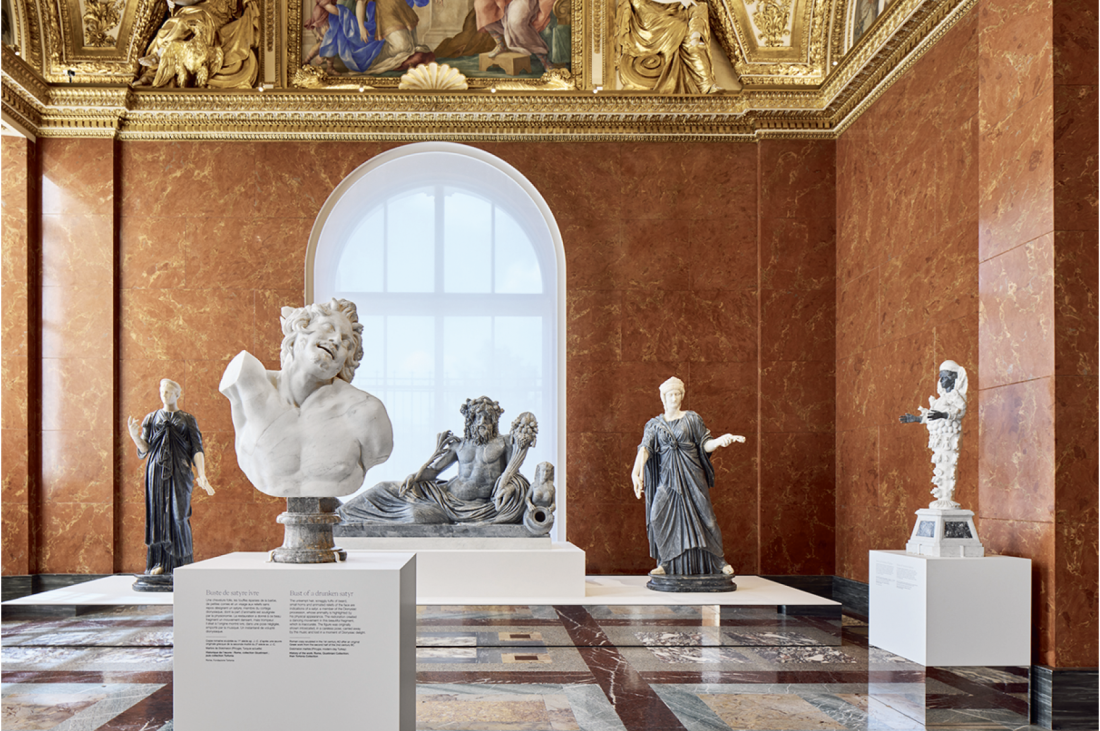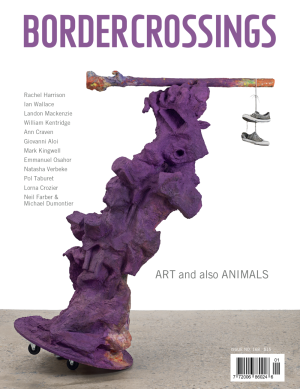“Chefs-d’oeuvre de la collection Torlonia”
“I adore the Roman copies,” wrote Frank O’Hara of the “pain … converted into statuary” by “the mountainous-minded Greeks.” The Louvre’s recent exhibition of 62 works from the Torlonia collection in Rome would surely have delighted the poet, and offers much food for thought for anyone interested in contemporary as well as classical art.
To get the backstory out of the way: The collection of more than 600 classical marble sculptures was amassed starting around 1800 (mainly by buying and aggregating a number of smaller collections) by a Roman prince and subsequently by his son, who established a museum to house and display the works, which became, according to The Art Newspaper, “largely inaccessible after the Second World War.” Years of negotiations between the Torlonia family and the Italian state have led to a series of exhibitions, first in Italy, then at the Louvre and finally across North America, as well as promises to permanently reopen the Torlonia Museum to the public at some undefined point in the future. The Paris exhibition was curated by Cécile Giroire, Director of the Department of Greek, Etruscan and Roman Antiquities, Musée du Louvre. While the Louvre already possesses an impressive collection of Greco-Roman sculpture, the Torlonia show affords a particularly intense encounter with an art form of undeniable aesthetic power that is nonetheless quite alien in its presuppositions to the art that developed under its influence, from the Italian Renaissance onward and still today.

Installation view, “Masterpieces from the Torlonia Collection,” 2024– 2025, Musée du Louvre, Paris. Photo: Agostino Osio. © Fondazione Torlonia, Rome. Courtesy Musée du Louvre, Paris. Foreground: Il Caprone (Statue of Resting Goat), early 2nd century AD, white marble. Torlonia Collection, Rome (Ancient Giustiniani Collection).
The beauty of some of these objects is extraordinary and, I am tempted to say, timeless. Most astonishing among them, perhaps, is a portrait bust of a young woman, dubbed La Fanciulla da Vulci, the maiden of Vulci (a town about 160 kilometres north of Rome where the piece was excavated in the 19th century). According to the label, “it attests to the adoption in Italy, at the end of the Republic (mid-1st century BC), of the elegant style of Alexandrian artists, who excelled at rendering the softness of flesh.” It combines an incredible refinement of detail with a quasi-minimalist simplicity of form; as Stefania Tuccinardi points out in the catalogue, it synthesizes idealized representation with distinctly individual features. The slight turn of the head, upward and to the right, is strikingly lifelike: a human presence that seems perfectly contemporary or as ancient as you can imagine. (Perhaps the applied decorations of gold and gemstones thought to have once adorned her hair would have given more of a period appearance.)
A different kind of realism could be seen in an unfinished full-length figure of a Dacian captive dated to 106–117 AD, found in Rome in 1859. We are told that such images of subjugated barbarians were common images of Roman power; all the stranger that this bearded veteran is portrayed with what I can see only as profound sympathy. It seems one is already in the world of Velázquez—of his images of the Cynic philosopher Aesop, of the weary and decrepit Mars, or even of that poor Pope Innocent imprisoned in his robes and throne.

Installation view, “Masterpieces from the Torlonia Collection,” 2024– 2025, Musée du Louvre, Paris. Photo: Agostino Osio. © Fondazione Torlonia, Rome. Courtesy Musée du Louvre, Paris. Foreground: Head of a Satyr, replica of the Herculaneum type, early 1st century AD, white marble. Torlonia Collection, Rome (Ancient Giustiniani Collection).
Tending more toward idealization than those two works is a seated statue of Hygieia, the goddess of health, a 2nd-century copy of a Greek original from the 430s BC—though the ancient image might have been combined with a contemporary portrait. But the dog sitting watchfully under the goddess’s couch surely must be a portrait from life. Although this Hygieia, like the other works I’ve mentioned, was a 19th-century discovery, seeing them leaves no doubt that the old idea—that the realism of Italian Renaissance art was inspired by classical statuary— holds true. Sculptures like these seem to presage three centuries or more of European art. A statue of a resting he-goat really is a Renaissance discovery—and in part, as well, a post-Renaissance product: the remarkably intelligent-looking head was restored by the young Gian Lorenzo Bernini.
And yet it could be argued that by the criteria that began developing in the 16th century and became fully articulated by the 18th century, these sculptures are barely art at all, since they are innocent of ideas of genius or originality: a replica of a 100-year-old statue, a product of industry rather than inspiration, would not, by the standards we claim to hold, count as a work of art—no more than, say, a copy of a Van Gogh produced in the Chinese painting village of Dafen would count. And yet, in the wake of conceptual art, our ideas about authorship have become more ambiguous. Perhaps every copy that transmits the idea that animated the original can claim equal status—and so can the unfaithful copy that surreptitiously inflects the idea. An artist can be a copyist (although not just any copyist can be an artist, and the market— even for conceptual art—still rests on the ideal of authenticity: try selling your photograph of Richard Prince’s photograph of a Marlboro ad as a work by Prince, or remaking a lost piece of your Cady Noland). What does it mean that the postmodern critique of authorship returns us to a state of affairs some two millennia old?—and that two millennia ago the results could be of unsurpassed beauty, which might not be the case with today’s reconstructed art. “In our culture of the copy,” cultural historian Hillel Schwartz once wrote, “the medium indemnifies the message and transcends time.” Maybe. But not as much, perhaps, as the maiden of Vulci. ❚
“Chefs-d’oeuvre de la collection Torlonia” was on exhibition at the Musée du Louvre, Paris, from June 26, 2024, to January 6, 2025, following earlier iterations, titled “I Marmi Torlonia. Collezionare Capolavori” at the Capitoline Museums, Rome, from October 14, 2020, to February 27, 2022, and the Gallerie d’Italia, Milan, from May 25, 2022, to September 18, 2022. Under the title “Myth and Marble: Ancient Roman Sculpture from the Torlonia Collection,” a smaller selection of the Torlonia marbles is on view at the Art Institute of Chicago, from March 15, 2025, to June 29, 2025, thereafter touring to the Kimbell Art Museum, Fort Worth, from September 14, 2025, to January 25, 2026, and the Montreal Museum of Fine Arts, from March 14, 2026, to July 19, 2026.
Barry Schwabsky’s recent books of poetry are Feelings of And (New York: Black Square Editions, 2022) and Water from Another Source (New York: Spuyten Duyvil, 2023). Forthcoming is an essay, “Midcareer” (Los Angeles: Ten O’Clock Project).

